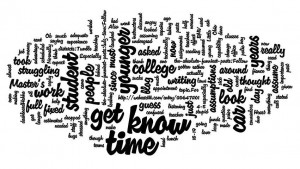Article Information
Nishimura, H., Lim, K.Y.T., & Koyamada,K. (2012). The Abyss Observatory designing for remote collaboration, self-directed discovery, and intuition development in multi-user interactive 3D environments. Journal of Virtual Worlds Research, 5(2), 1-11.
Selecting This Article
I chose this article because the abstract mentioned that they were using Second Life. Since, our class has read about Second Life this week I thought it would pertain to our class and further my knowledge on this virtual world. I was also interested in seeing what The Abyss was and how they were able to create it in a virtual world, and what makes it different from a museum in the real world.
Summary
In this article, the authors talked about how they were able to create a learning environment in the virtual world, and what challenges may come up from this. The article was divided into three sections and talked about how each were vital in helping create The Abyss and other virtual world creations. These sections were; Collaboration, Visualization of Relation, and Fusion of 3D Model and Data from the Real World. For collaboration, the authors discussed how the creators of the Abyss were able to come together, no matter where they were, and create this museum in Second Life. They also mentioned it was easier, and less costly, to build plus it was accessible to users all over the world. Visualization allowed creators to create a more life-like museum to allow users to get a better understanding and full experience of different environments. For example, it is harder to create and exact underwater experience and environment. In Second Life, they were able to create underwater exhibits for users to tour. The creators also made the Abyss so that users can choose to tour what exhibit/world they want and use arrows to help guide them on their tour, eventually looping back to the starting point/hub. Since it is difficult to get an exact picture of what all environments are like, especially underwater, they authors talk about how the users combined the real world data that they were presented with, and created a 3D model to help bring the museum exhibits to life. With the combination of these three sections, creators were able to create the Abyss so users can tour and learn about the different environments and get the sense that they are actually in that environment. This also helps future creators design virtual museums or environments to be realistic.
Presentation in a Business Education Setting
Since this article was talking about creating a realistic environment in a virtual world, I was not sure how I would be able to apply this in a business education setting. However, I could have students explore different places on Second Life, or a similar virtual world, and then give them the task to create/design their own business or setting. This would require more than just a basic knowledge of Second Life so it would be a longer process than just exploring the site.
Presentation in a Business/Industry/Healthcare Environment
This article gives businesses, industries, and healthcare a new way to reach potential customers. Business people can create businesses and allow potential customers to explore their products and services through the virtual world. It would also give them a way to test their products at a lower cost .
Opinion on the Research
I found the research confusing at first, because of all the terminology that I was not familiar with. However, after carefully rereading the article, I developed an understanding of it. I think that this research is very useful to those who want to develop a realistic environment or building on Second Life, or another virtual world. This research also made me curious and want to check out how realistic the Abyss and similar environments and museums are.
